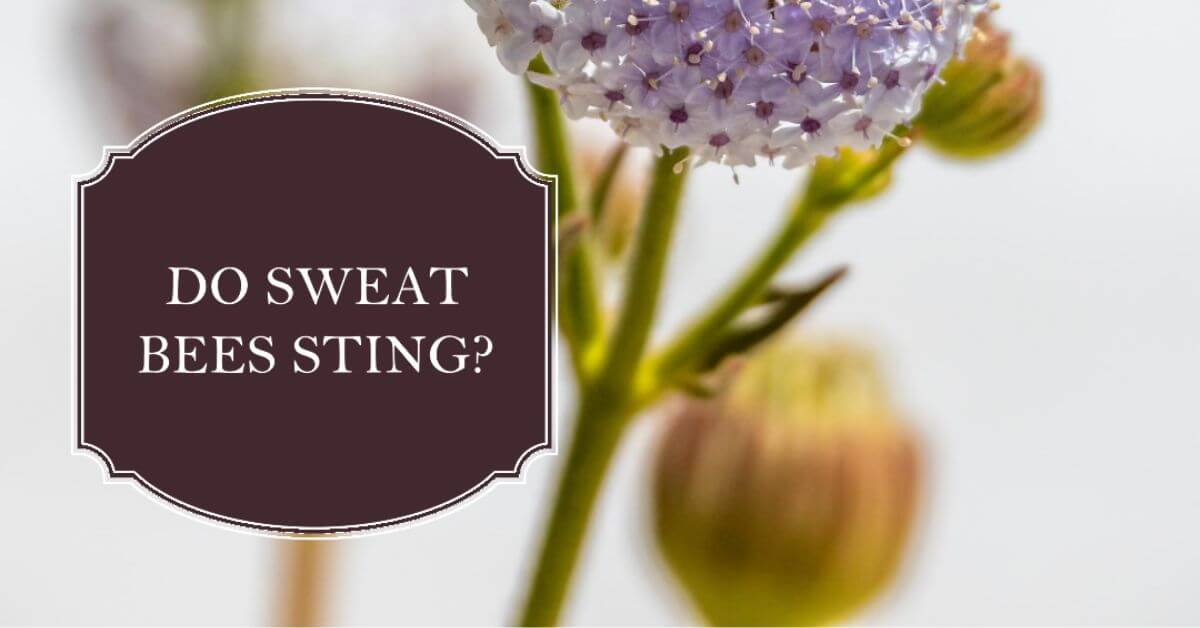Sweat bees, also known as halictid bees, are a common sight in many regions, particularly during the warmer months. While these small, colorful bees play an essential role in pollination, their presence can sometimes lead to encounters with their stingers. In this article, we will explore various aspects of sweat bee stings, from their appearance to potential dangers, and offer guidance on treatment and prevention.
Do Sweat Bees Sting?
Yes, sweat bees do have the ability to sting. Although generally not aggressive, they may sting if they feel threatened or perceive their nest to be under attack. While their stings are not as painful as those of other bee species, they can still cause discomfort and irritation to those who are sensitive to insect stings.
Understanding the Sweat Bee Sting
The sweat bee sting is typically characterized by redness, slight swelling, and a mild burning sensation at the site of the sting. The stinger itself is usually barbed and left behind in the skin, similar to honeybees, though sweat bees are less likely to sting multiple times.
Can Sweat Bees Sting Multiple Times?
Unlike honeybees, sweat bees can sting multiple times due to their smooth stinger, which allows them to withdraw their stinger and strike again. However, they are not as aggressive as some other bee species, so multiple stings are relatively rare.
Itch and Allergic Reactions
A sweat bee sting can cause itching, which may vary in intensity depending on an individual’s sensitivity. For most people, the itching and discomfort subside within a few hours or days. However, some individuals may experience allergic reactions, ranging from mild to severe. If you have a history of severe allergies to insect stings, it is essential to seek immediate medical attention if stung.
Are Sweat Bee Stings Dangerous?
Generally, sweat bee stings are not considered dangerous for the average person. Most people will experience only mild discomfort and itching at the sting site, which resolves on its own. However, as mentioned earlier, those with severe allergies should be cautious and prepared for potential reactions.
Duration of Sweat Bee Stings
The duration of a sweat bee sting’s effects can vary from person to person. In the majority of cases, the discomfort and redness last for a few hours up to a day. The itchiness may persist for a few days before gradually subsiding.
Related Posts:
- Do Bees have a Brain?
- How to get rid of Ground bees without killing them?
- Why Do Bees Die After Stinging?
Treatment for Sweat Bee Stings
If you are stung by a sweat bee, here are some steps to alleviate discomfort and promote healing:
Remove the Stinger: Use a credit card or a fingernail to gently scrape off the stinger from your skin to prevent more venom from entering.
Cleanse the Area: Wash the sting site with mild soap and water to reduce the risk of infection.
Apply Cold Compress: Applying a cold compress or ice pack wrapped in a cloth to the sting area can help reduce swelling and soothe the discomfort.
Over-the-Counter Remedies: Over-the-counter creams or ointments containing hydrocortisone can be applied to alleviate itching and redness.
Antihistamines: If the itching persists, consider taking oral antihistamines as directed by a healthcare professional.
Prevention and Precautions
Preventing sweat bee stings can be achieved through a few simple precautions:
Avoid Agitation
Sweat bees are generally docile and not aggressive, but sudden movements or swatting near their nests can trigger defensive behavior. Be cautious and avoid disturbing their habitat.
Wear Protective Clothing
When spending time outdoors, especially in areas known to have sweat bees, consider wearing long-sleeved shirts, long pants, and closed-toe shoes to reduce the chances of getting stung.
Use Insect Repellent
Applying insect repellents containing DEET or picaridin can help deter sweat bees from approaching you.
Choose Fragrance-Free Products
Sweat bees are attracted to sweet scents, including perfumes and scented lotions. Opt for fragrance-free products to avoid drawing their attention.
Conclusion
Encounters with sweat bees and their stings are a common part of the outdoor experience. In most cases, the stings are mild and pose little threat to the average person. However, those with known allergies should be vigilant and take appropriate precautions. By understanding sweat bee behavior and following proper treatment measures, you can enjoy the great outdoors with confidence and minimal discomfort.




